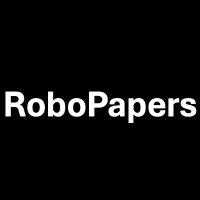
Ademi Adeniji
@ademiadeniji
PhD @UCBerkeley. Prev @NVIDIAAI, @Stanford. Reinforcement Learning, Robot Learning, Robot Foundation Models
ID: 1527628302973906944
https://ademiadeniji.github.io 20-05-2022 12:33:42
68 Tweet
493 Followers
218 Following








Just open-sourced Geometric Retargeting (GeoRT) — the kinematic retargeting module behind DexterityGen. Includes tools for importing custom hands. Give it a try: github.com/facebookresear… A software by Berkeley AI Research and AI at Meta. More coming soon.


Full episode dropping soon! Geeking out with Vincent Liu Ademi Adeniji on EgoZero: Robot Learning from Smart Glasses egozero-robot.github.io Co-hosted by Chris Paxton Michael Cho - Rbt/Acc
